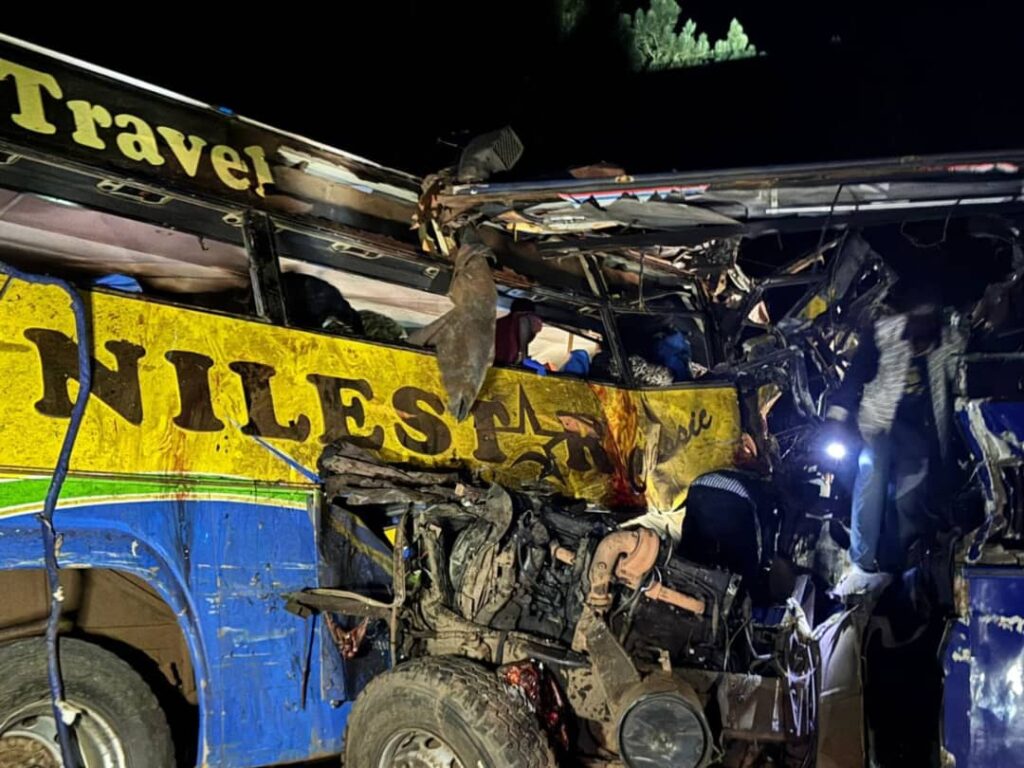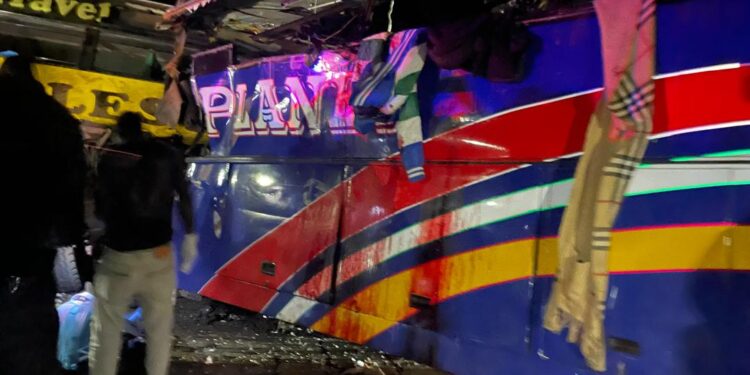Museveni Mourns Victims of Catastrophic Highway Road Bus Crash
Kampala Uganda
A devastating road accident earlyWednesday, 22 October 2025, on Uganda’s busy Kampala–Gulu Highway has left dozens dead and many more injured. According to the Uganda Police Force, two buses travelling in opposite directions attempted risky overtaking manoeuvres near Kitaleba Village in Kiryandongo District when disaster struck.
In one account, a bus heading north from Kampala (registration UBF 614X, operated by Nile Star Coaches) attempted to overtake a Tata lorry (UBK 647C) at around 12:15 a.m. Simultaneously, an Isuzu bus (UAM 045V, Planet Company) coming from the opposite direction tried to overtake a Toyota Surf (CGO 5132AB 07). The two buses collided nearly head‑on, one driver swerving to avoid the crash but triggering a chain reaction: both buses struck each other and other vehicles overturned.
Initial police figures put the death toll at 63, but a revised statement reported 46 confirmed deaths after hospitals and rescue teams clarified that some of the unconscious victims were still alive. Many injured passengers were transported to Kiryandongo Hospital and other nearby facilities.
Road‑safety experts and the police emphasise that dangerous overtaking remains among the leading causes of fatal accidents in Uganda. According to recent data, overtaking and speeding contributed to 44.5 % of crashes in 2024 (with 5,144 fatalities reported that year) compared to 4,806 in 2023.
Yoweri Kaguta Museveni, President of Uganda, has sent his condolences and directed that compensation of Shs 5 million (Uganda shillings) be provided to each bereaved family and Shs 1 million to each injured person.

Why it matters
This is among the worst traffic disasters in Uganda in recent years—a reminder of the persistent road‑safety challenge, especially on major highways.
The Kampala–Gulu Highway is a vital connection between the capital and northern Uganda, making such crashes not just tragic for individual families, but for national mobility and infrastructure reputation.
The incident underscores deeper issues: heavy‑vehicle traffic mix, overtaking behaviour, road condition, nighttime driving risks, and emergency response capabilities.
With the presidential acknowledgement and compensation order, there will likely be renewed public scrutiny of transport regulation, bus company practices, and road‑safety enforcement.
What Next
Transport authorities and bus operators need to review overtaking protocols, driver training and night‑driving risk mitigation.
Government should consider stricter enforcement of heavy‑vehicle movement rules (especially on high‑risk roads at night).
Families of the victims will need long‑term support; the public may call for better crash‑data transparency and monitoring.
The Urban Gazette readers: we should follow up on the rescue efforts, identify whether the bus companies are held accountable, and examine government plans to prevent future incidents.





